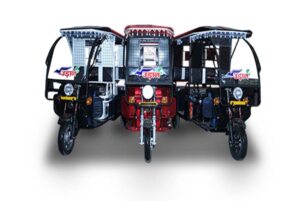Udaan has revealed its expansion targets in electric mobility segment for the Northeastern region.
 Having already established its dominance in northern states, the company is now set to expand its operations in the Northeast.
Having already established its dominance in northern states, the company is now set to expand its operations in the Northeast.
Alongside electric rickshaws, Udaan has a strong presence in various segments like electric auto rickshaws, electric rickshaw loaders, electric bikes, scooters, and cars.
Mitull Batraa, CEO & Co-Founder of Udaan Vehicles, expressed their vision of becoming the top e-rickshaw company in the Northeast by offering innovative, reliable, and value-for-money transportation solutions. Their aim is to revolutionize last-mile connectivity, contribute to sustainable urban mobility, and achieve significant sales growth in the region, where the e-rickshaw market accounts for approximately 40% of India’s total.
To bolster its presence, Udaan has appointed Zonal Sales heads for the East and Northeast regions and is actively creating a network of distributors and dealers. Collaborations with local partners ensure a hassle-free purchasing, maintenance, and after-sales service experience for customers.
Their focus on research and development reflects in the introduction of improved products with better design, extended range, superior performance, and high safety standards, including 1200-Watt Motor and Controller Smart Connect Technology, as well as CED Coated paint technology for certain battery products.
Udaan plans to raise awareness and promote e-rickshaws through marketing and branding campaigns, digital marketing efforts, hoardings, and collaborations with local authorities and transport associations.
The company is also engaging with governments and local authorities to promote electric mobility in the region by participating in policy formulation, establishing charging infrastructure, and fostering an EV ecosystem.
Additionally, Udaan has partnered with various banks and financial institutions to facilitate credit facilities, making it easier for prospective buyers to adopt electric vehicles without cost barriers.

